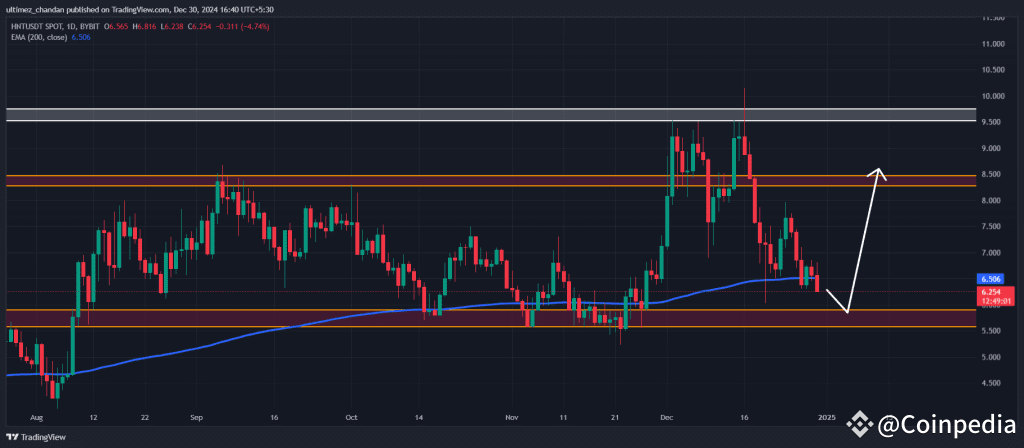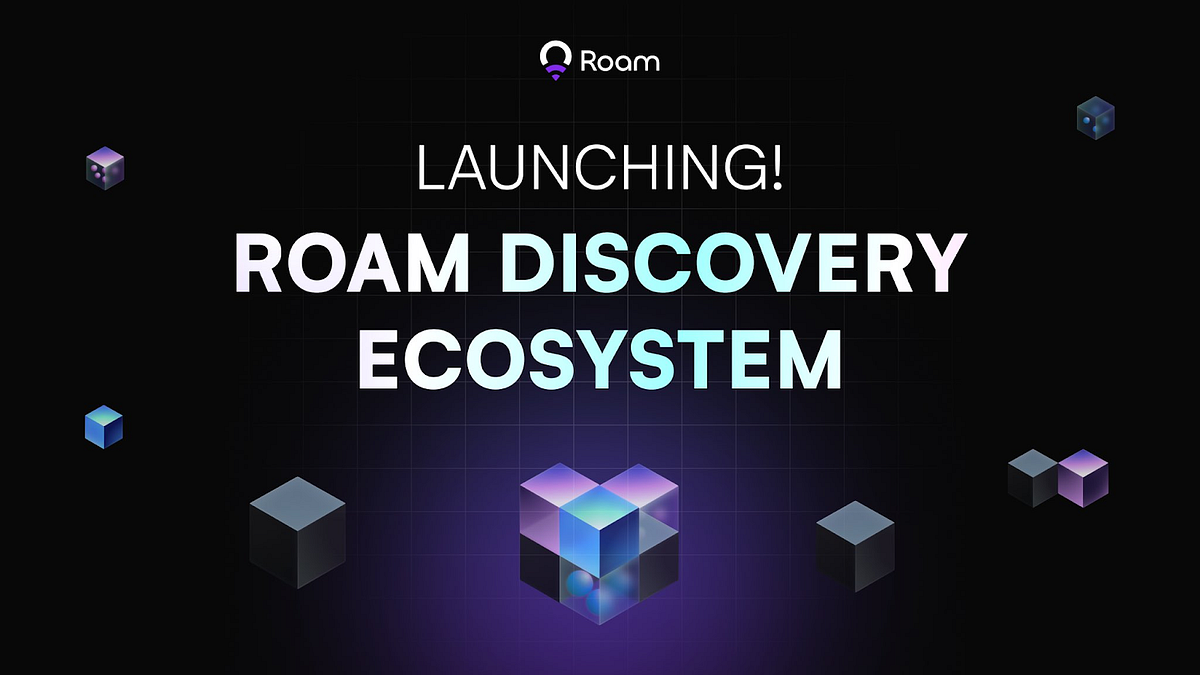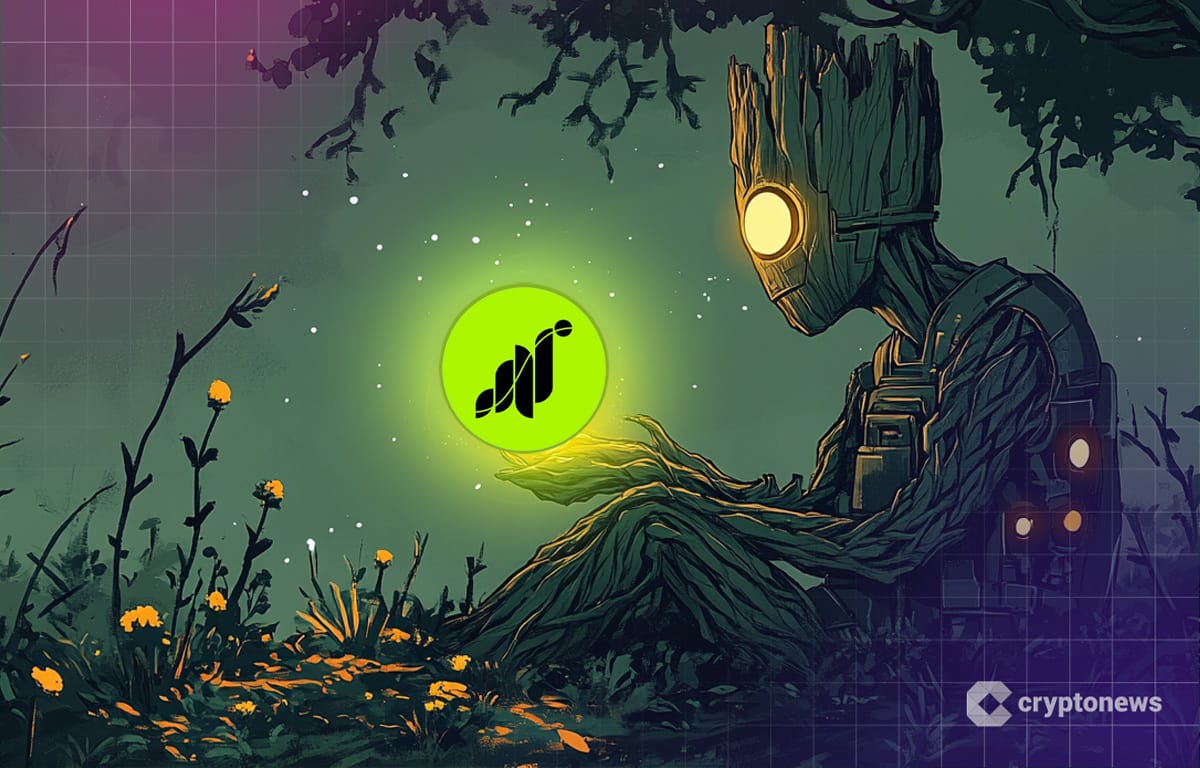Latest DePIN News

10 months ago
Powerloom Aims to Reshape Data Integrity in Blockchain
Swaroop Hegde, CEO and Co-Founder of Powerloom, recently discussed the company's mission to enhance data integrity in blockchain during an episode of The SlateCast. Powerloom utilizes a decentralized node network to ensure verifiable on-chain data integrity for web3 applications. Supported by prominent investors like Blockchain Capital and Filecoin, Powerloom aims to set a new benchmark for composable and decentralized data solutions, transforming user interactions with on-chain data and driving innovation in web3 applications.
Hegde emphasized the current challenges in accessing and verifying on-chain data, which often depend on centralized sources, leading to potential data manipulation and outdated information. Powerloom addresses these inefficiencies through its decentralized node network, which allows real-time data computation without centralized intermediaries. With over 5,300 nodes, even non-technical users can contribute, ensuring the reliability and verifiability of the data provided. This unique approach focuses on dynamically composing data based on demand rather than indexing all available data, catering to various use cases across multiple chains.
A notable feature discussed was Powerloom's Generative Prediction Markets (GPM), an automated on-chain prediction system that resolves in 30 minutes without human intervention. This innovative application demonstrates the potential for new products built on Powerloom's decentralized infrastructure. Looking ahead, Hegde outlined plans for 2025, including the introduction of dynamic data markets and a feature called Watchmen, aimed at verifying data accuracy in real-time. Powerloom's mission is to simplify access to decentralized data while fostering innovative applications, ensuring transparency and reliability as the web3 landscape evolves.

10 months ago
Top 10 DePIN Coins to Invest in 2025
In the rapidly evolving cryptocurrency landscape, Decentralized Physical Infrastructure (DePIN) is emerging as a significant narrative for investment in 2025. DePIN projects leverage blockchain technology to enhance real-world physical infrastructure, creating value for both consumers and producers. This article highlights the top 10 DePIN coins that are expected to perform well, showcasing their market capitalizations and promising price actions. Among these, Helium (HNT) stands out with its bullish price action pattern, suggesting a potential surge of 30% to reach $8.5. Similarly, Filecoin (FIL) is anticipated to rally by 65% if it maintains support above $4.90, while Theta Network (THETA) could see a 36% increase if it breaks above $2.45.
Other notable mentions include Internet Computer (ICP), which has found support at critical levels, indicating a potential 55% surge to $15.45. IOTA has attracted attention with a remarkable 540% increase following recent events, although it has faced a correction. If it holds above $0.28, a 35% rise to $0.40 is plausible. Render (RENDER) is also positioned for a breakout, with a potential 60% increase if it surpasses $7.22. Meanwhile, Arweave (AR) and Akash Network (AKT) are showing consolidation and support at key levels, suggesting possible surges of 50% and 60%, respectively.
Lastly, AIOZ Network (AIOZ) and Hivemapper (HONEY) are also on the radar, with AIOZ poised for a 55% increase if it holds above $0.82 and HONEY potentially surging by 50% if it breaks the $0.09 resistance. These DePIN coins represent significant opportunities for investors in 2025, especially if the market experiences a bullish trend.

10 months ago
Roam Launches Discovery Ecosystem to Enhance User Benefits and Drive Innovation
On December 24, 2024, Roam officially launched the Roam Discovery Ecosystem, a groundbreaking platform aimed at enhancing user benefits through strategic partnerships within the ecosystem. This initiative marks a significant milestone for Roam users, as it promises sustainable returns by supporting innovative projects in their early stages, backed by strong community involvement. The Roam Discovery System provides access to the world's largest decentralized global wireless network, boasting over 1.7 million app users and more than 1 million nodes across 200 countries, thereby facilitating a transformative decentralized experience.
The Roam Discovery Ecosystem not only offers cutting-edge tools but also fosters a collaborative environment for eco-projects to expand their influence. By leveraging Roam's extensive global Wi-Fi node network, the platform provides partner projects access to invaluable user bases, grants, and community resources. The strategy includes enticing airdrop incentives and dual token mining opportunities, which promise significant future returns for users of both Roam and its partner projects. The ecosystem launches with 20 partner projects that are pivotal in advancing innovation across key sectors such as Layer 1, PayFi, and AI, including notable names like IoTeX, Huma Finance, and Mind Network.
Roam's commitment to advancing crypto mass adoption is evident in its recent collaborations with 20 leading projects, which include both established industry leaders and innovative startups. Since the introduction of its Physical Layer 1 narrative in September 2024, Roam has consistently ranked at the top for hardware node count on DePINscan, with over 1 million active nodes. In less than a year, Roam has achieved over 1.7 million users and 1 million nodes, solidifying its leadership in the DePIN sector. The launch of Roam Discovery aligns with Roam's 2025 Roadmap, which emphasizes product development, technological advancements, and community ecosystem growth, positioning Roam to redefine the future of the DePIN sector and foster a more interconnected digital society.

10 months ago
AYDO's Breakthrough Year: Bridging Web2 and Web3 in 2024
2024 marked a pivotal year for AYDO within the Decentralized Physical Infrastructure Network (DePIN) ecosystem, as the project successfully bridged the gap between Web2 and Web3. This innovative platform empowered users to take control of their IoT-generated data, transforming it into an asset that they could own and monetize. AYDO made significant strides at major blockchain and tech events, including Token2049 and the DePIN Summit 2024, showcasing its advancements and forming strategic partnerships with notable DePIN and AI projects. One of the highlights was being selected as one of only six projects to join the prestigious DePIN Base Camp accelerator, further solidifying its position in the market.
The beta testing phase of AYDO received an overwhelming response, with over 7,000 applicants vying for a chance to participate. From this pool, 300 individuals were chosen to engage in the beta launch, including Ambassadors and AYDO OGs. Their feedback has been invaluable in refining the platform, ensuring a user-friendly experience. In addition to technological progress, AYDO focused on community engagement by launching a Discord server and establishing an Ambassador Program. This initiative fostered a sense of belonging among members, rewarding them for their contributions and insights.
Looking ahead to 2025, AYDO is poised for further growth with the upcoming official app launch. The partnerships formed throughout 2024, such as those with 375ai and Axone, have expanded AYDO's capabilities, allowing for enhanced data collection and monetization opportunities. To celebrate its achievements, AYDO is hosting a Testnet giveaway, encouraging community participation through creative tasks. As AYDO continues to evolve, it aims to revolutionize the decentralized data landscape, creating significant value for users worldwide and solidifying its role in the blockchain and IoT ecosystem.

10 months ago
Grass Cryptocurrency: A Promising Yet Challenging Journey Ahead
The cryptocurrency project Grass, built on the Solana blockchain, has recently made headlines with a remarkable 494% surge in price following its airdrop. Initially, the price peaked at $3.89 on November 8, 2024, but has since stabilized around $2.3 to $2.4. With 2 million users and a position among the top 15 Decentralized Physical Infrastructure Network (DePIN) coins, Grass shows significant potential, although it faces regulatory scrutiny and challenges regarding its data collection practices. The project allows users to earn passive income through web scraping, utilizing unused internet bandwidth to train artificial intelligence, which raises concerns about privacy and data security.
Despite the initial excitement surrounding the airdrop, which distributed 10% of the total supply to users, the price has seen fluctuations. Analysts suggest that while Grass has established itself in the market, it must navigate potential regulatory hurdles and the lack of an audit for its code. The project’s unique model, which involves nodes, routers, and validators to manage data collection, positions it well within the growing DePIN sector. However, the project's reliance on user data and the absence of transparency in its operations may hinder its long-term growth prospects.
Looking ahead, the high annual percentage yield (APY) for staking, estimated at around 50%, and the anticipated launch of an iOS app in Q1 2025 could reignite interest in Grass. As the project continues to evolve, its ability to maintain user engagement and adapt to regulatory landscapes will be crucial. The crypto community remains cautiously optimistic, with traders noting that while the price may not experience drastic changes, it could stabilize and potentially rise again as the project matures and expands its offerings.

10 months ago
Revolutionizing Infrastructure: The Rise of DePin Crypto
Decentralized Physical Infrastructure Networks (DePin) are revolutionizing the way we think about real-world infrastructure by leveraging blockchain technology. This innovative approach aims to redistribute power from centralized corporations back to the community, making systems like storage and streaming more accessible and equitable. With a surge in interest, several DePin coins are emerging as key players in this space, offering unique solutions and investment opportunities. Notable projects include Chirp, Render, BitTorrent, Filecoin, Theta Network, MultiversX, and Ocean Protocol, each contributing to the decentralization movement in distinct ways.
Chirp stands out as a decentralized telecommunications network built on the Sui blockchain, focusing on IoT connectivity. By allowing users to operate their devices and earn CHIRP tokens, it incentivizes participation and fosters a more interconnected digital landscape. Render Network, on the other hand, connects creators with GPU providers, democratizing access to rendering services. Its recent transition from Ethereum to Solana has enhanced transaction speeds, making it a favorite among creatives. Meanwhile, BitTorrent has evolved into a decentralized file-sharing platform, rewarding users with BTT tokens for sharing files, showcasing the potential of community-driven content distribution.
Filecoin operates like an Airbnb for data storage, enabling users to rent out digital storage space while ensuring data security through blockchain verification. Theta Network is redefining video streaming by allowing users to share bandwidth, enhancing content delivery while rewarding participation with TFUEL tokens. MultiversX offers a scalable blockchain infrastructure, facilitating efficient transactions for various applications, while Ocean Protocol focuses on decentralized data exchange, supporting AI and machine learning through tokenized datasets. As DePin continues to grow, these projects exemplify the shift towards a more decentralized and user-centric digital economy.

10 months ago
2025: A Pivotal Year for Blockchain and AI Integration
As we enter 2025, the cryptocurrency and blockchain sectors are poised for significant transformation, driven by a blend of macroeconomic factors, regulatory progress, and technological advancements. Insights from Messari and Coinbase indicate that this year could be pivotal for the evolution of Web3, AI, and decentralized infrastructure. Fog Works is at the forefront of this movement, focusing on innovation, sustainability, and community engagement to redefine the digital landscape. The increasing clarity in regulatory frameworks, especially in the U.S. and Europe, is expected to catalyze institutional adoption and innovation, with Coinbase predicting a rise in regulated financial products, including tokenized securities and compliant DeFi solutions.
One of the most notable trends is the integration of AI with blockchain technology. Messari highlights the potential for decentralized AI systems to transform data management and privacy-centric applications. Fog Works is aligning its advancements in AI-enabled personal storage with this trend, emphasizing the importance of decentralized physical infrastructure networks (DePIN) as a critical layer in the Web3 ecosystem. As users seek alternatives to centralized tech giants, companies deploying real-world applications for data storage and IoT are expected to thrive. Additionally, NFTs are evolving beyond art into areas like music royalties and real estate tokenization, necessitating secure, decentralized storage solutions.
Fog Works' achievements in 2024 set a strong foundation for 2025. The company has made significant strides in product innovation, market expansion, and community building. Notable advancements include the Foggie Max backup system, which enhances data security and sharing capabilities, and the integration of AI-powered features that allow users to create personal knowledge bases. With a focus on sustainability, Fog Works aims to adopt energy-efficient technologies and forge partnerships that promote greener blockchain practices. As the market landscape continues to evolve, Fog Works is well-positioned to lead the charge in the decentralized future of technology.

10 months ago
Maximizing Rewards with Roam's Burning Pools
In the Roam ecosystem, Roam Points serve as a crucial incentive for users contributing to the network's growth. These points can be utilized in various ways, but their primary value lies in the ability to be burned for $ROAM tokens following the Token Generation Event (TGE). To facilitate this conversion, Roam has established three distinct burning pools: the General Burning Pool, Miner Burning Pool, and Validator Burning Pool. Each pool caters to different user types based on their contributions, providing a structured approach to maximizing rewards through point conversion.
A burning pool allows users to exchange their Roam Points for $ROAM tokens by burning them, which permanently removes the points from circulation. The conversion rate is dynamic, influenced by the total points burned and tokens generated within a specific timeframe. Users can choose to burn their points all at once or over several cycles, depending on their strategy. For instance, if only one user burns points, they receive a higher token yield compared to a scenario with many participants. This system not only incentivizes user engagement but also helps maintain the scarcity and value of $ROAM tokens.
The General Burning Pool is accessible to all users, while the Miner and Validator pools cater to specific contributors, such as miners and validators of Roam WiFi hotspots. Each pool has its own set of rules regarding minimum point input, eligible points, and burn periods, allowing users to tailor their participation based on their activities within the Roam network. By understanding the mechanics of these pools, users can effectively strategize their point burning to maximize their $ROAM token rewards, enhancing their overall experience within the Roam ecosystem.

10 months ago
Decentralized Infrastructure Networks: A Game Changer for AI Development
The data center industry is currently facing significant challenges in meeting the immense computing power requirements of artificial intelligence (AI), particularly for training large language models (LLMs). According to Bain & Company, advanced AI models necessitate thousands of graphics processing units (GPUs) during the pre-training phase, which in turn demands highly sophisticated data center architectures. Presently, major cloud service providers operate hyperscale data centers with capacities ranging from 50 to 200 megawatts, costing between $1 billion to $4 billion. However, projections indicate that by the end of the decade, these capacities will need to scale up to over 1 gigawatt, with costs soaring to between $10 billion and $25 billion. This situation is compounded by the dominance of tech giants like Alphabet, Microsoft, Amazon Web Services (AWS), and Alibaba, which limits opportunities for smaller competitors to build comparable infrastructures.
To address these challenges, decentralized physical infrastructure networks (DePIN) have emerged as a potential solution. DePIN aggregates small-scale computing resources, democratizing access to AI infrastructure and reducing reliance on major tech companies. By utilizing blockchain technology, tokenization, and decentralized governance, DePIN incentivizes participation from individuals and organizations, enabling them to contribute physical resources such as data storage, energy generation, and computing power. This decentralized approach not only enhances transparency and security but also allows for real-time data processing through edge AI, which deploys AI algorithms directly on devices at the network's edge, thereby alleviating the burden on centralized cloud networks.
Looking ahead to 2025, DePIN is poised to fundamentally transform the AI landscape. Experts predict a massive scaling of decentralized compute networks, shifting AI model training from centralized supercomputing clusters to distributed networks powered by DePIN. Additionally, tokenized incentives will encourage broader participation in AI development, allowing smaller players to monetize their resources while contributing to global innovation. Furthermore, the decentralized nature of DePIN enhances security and privacy, addressing vulnerabilities associated with centralized infrastructures. As DePIN matures, it is expected to facilitate groundbreaking applications across various sectors, including healthcare and energy management, while ensuring that AI infrastructure remains accessible to startups and researchers, thus fostering a more equitable technological ecosystem.

10 months ago
THETA Shows Bullish Signs Amid Market Uncertainty
As of December 27, 2024, THETA, the native token of Theta Network, is drawing significant attention from crypto traders due to a bullish price action pattern observed on its daily timeframe. Despite the larger cryptocurrency market facing challenges, with major assets like Bitcoin and Ethereum struggling, THETA has shown resilience. Currently, 69.2% of top traders on Binance are holding long positions in THETA, reflecting a strong bullish sentiment. The token's Relative Strength Index (RSI) is at 43, suggesting potential for upward momentum, especially as traders and whales continue to accumulate the asset following a recent price correction.
Technical analysis indicates that THETA has formed a descending triangle pattern, positioning it for a possible breakout. The altcoin has successfully retested its crucial support level at the 200 Exponential Moving Average (EMA). If THETA manages to break above the $2.41 mark, analysts predict it could surge by 37% to reach $3.33. The recent price action, combined with a significant $2.02 million in THETA outflows from exchanges, signals strong buying pressure and a potential increase in value as assets are moved to long-term holders' wallets.
In addition to the bullish on-chain metrics, the trading dynamics on Binance further bolster THETA's outlook. The long/short ratio for THETAUSDT stands at 2.25, indicating that traders are leaning heavily towards long positions. Although THETA's price has seen a slight decline of 1% in the last 24 hours, the overall market sentiment remains optimistic. With lower trading volume noted, it appears that traders are cautiously watching for the next significant movement in THETA's price trajectory.
Signup for latest DePIN news and updates